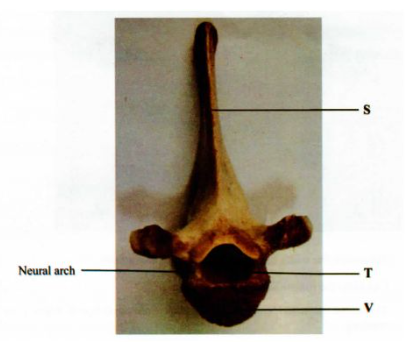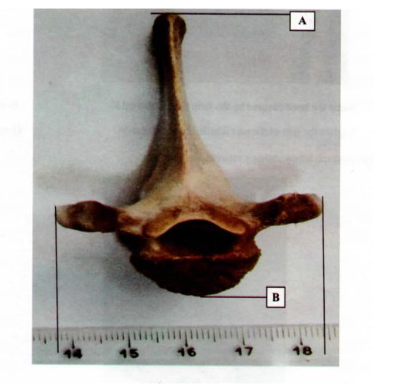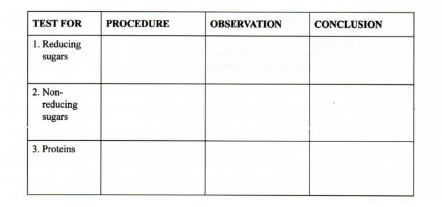
Biology Paper 3 (231/3)
1.(a) The photograph below shows the inner surface of the upper lefi side of the rib cage.

(i) Name the bone covered by the fatty tissue labelled K. (l mark)
(ii) Explain the role of the part labelled M in inhalation. (5 marks)
(b) The photograph below shows a mammalian vertebra.

(i) State the view of the vertebra presented. (1 mark)
(ii) Name and state one function of the part labelled T.
Name
…………………………………………………………………………………………………… .. (1 mark)
Function
………………………………………………………………………………….. .. (1 mark)
(iii) How are the parts labelled S and V adapted to their functions? (4 marks)
S ………………………
V ………………………
c) The actual width of the vertebra below in cm is shown by a section of the ruler in the photograph.

(i) Determine the width of the vertebra on the photograph. ( l mark)
(ii) Calculate the magnification of this image. (2 marks)
(iii) Determine the actual length of the vetebra from point A to B. Show your working. (2 marks)
2You are provided with a food sample labelled solution C. Using the reagents provided, carry out tests to identify the food substances present in the sample.

TEST FOR PROCEDURE OBSERVATION CONCLUSION l. Reducing sugars
2. Non- reducing sugars
3. Proteins
Below are photographs showing some observebal features of leaves. (12 marks)
Using the features in the order given below, construct a dichotomous key that can be used to identify the specimens.
- simple or compound leaves;
- leaf venation;
- leaf margin;
- arrangement of leaves on the stem;
- pinnate or trifoliate nature of leaves. (10 marks)
